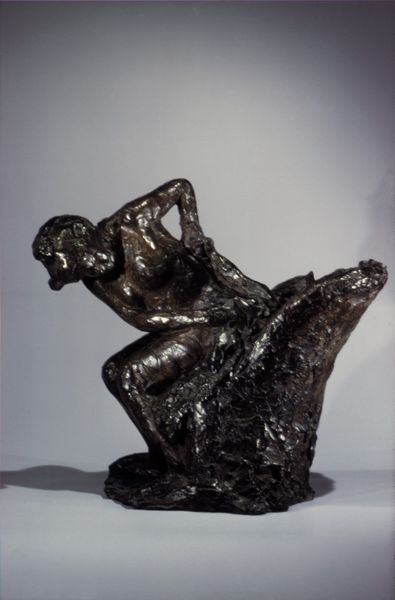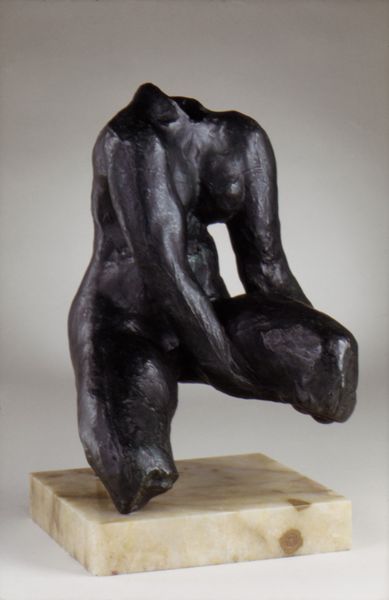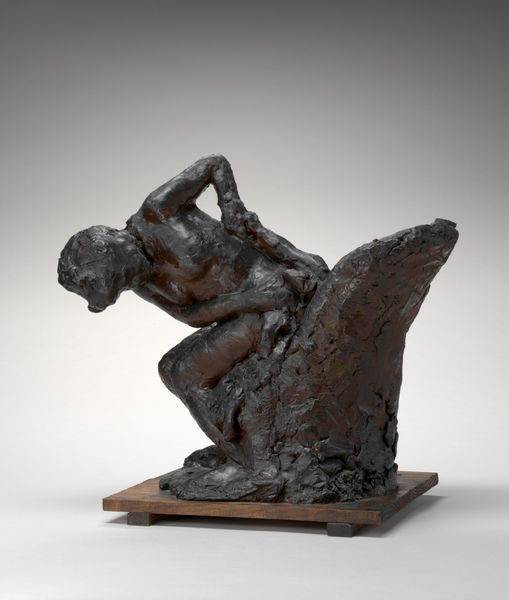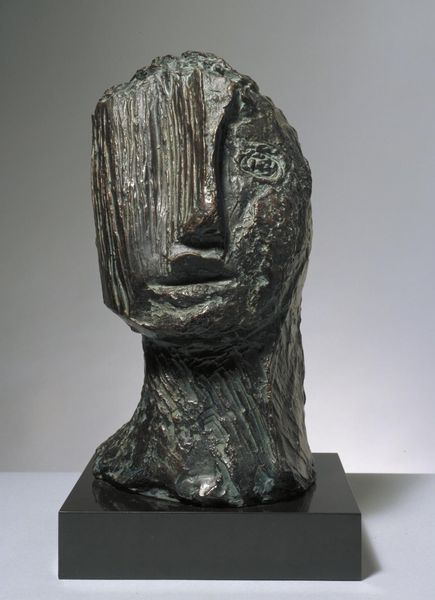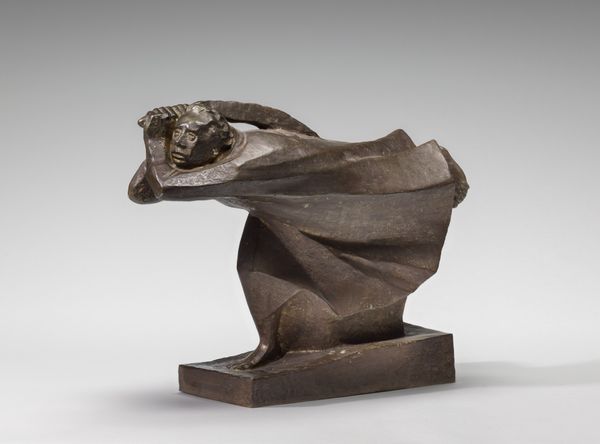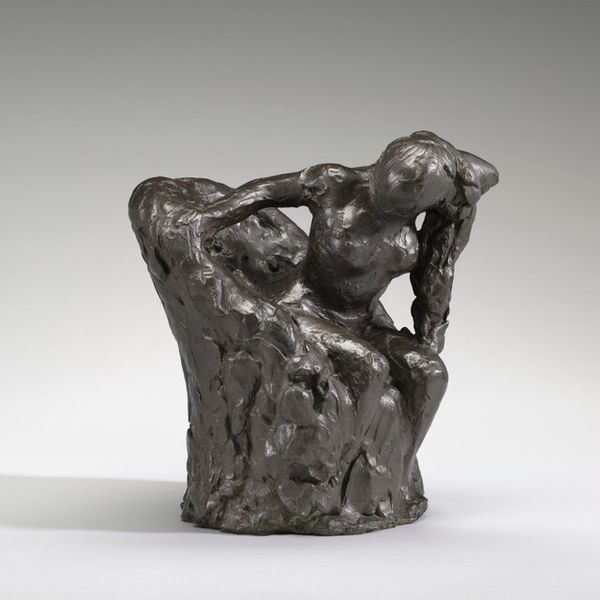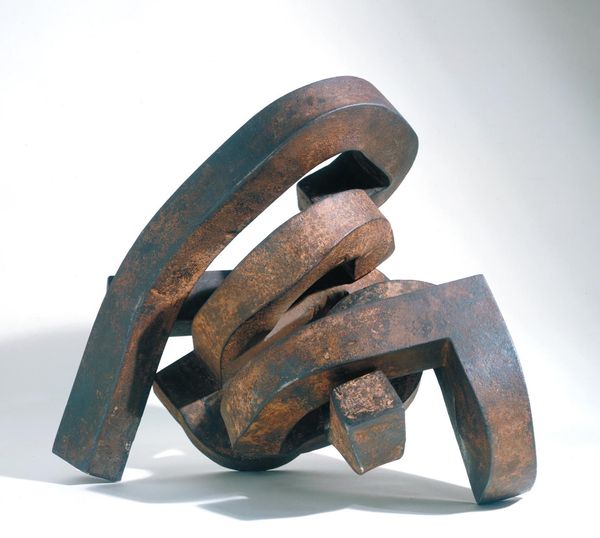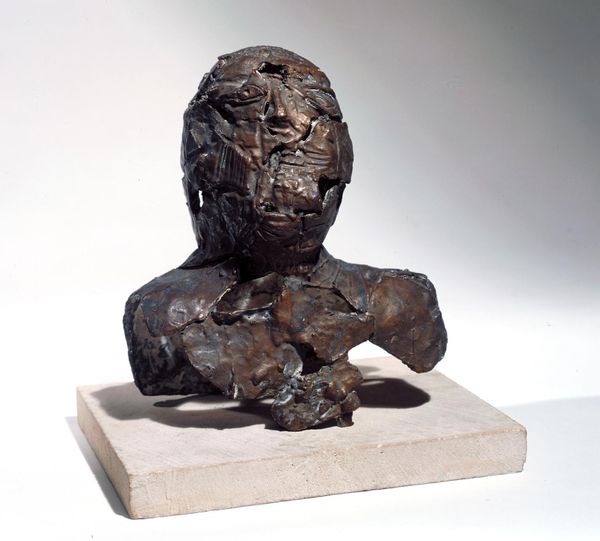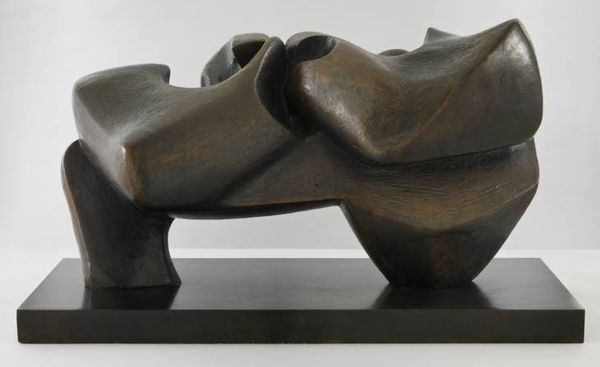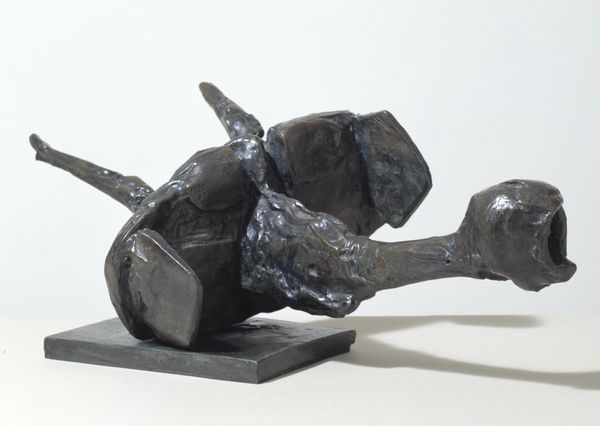
Dimensions: object: 438 x 578 x 203 mm
Copyright: CC-BY-NC-ND 4.0 DEED, Photo: Tate
Curator: Ernst Barlach's bronze sculpture, known as "The Avenger," currently held at the Tate, possesses such a strong sense of movement. Editor: It feels incredibly burdened, doesn't it? A powerful, yet oppressed figure seemingly struggling against a great weight. Curator: Barlach created this sculpture during a period of immense social and political unrest in Germany. The work may be interpreted as a commentary on the suppression of individual expression. Editor: The figure's determined gaze, combined with the horizontal form, also evokes a sense of defiance. Are they pushing against the forces of oppression, resisting in their own way? Curator: Exactly. The sculpture's lack of specific historical context allows it to resonate with various contemporary struggles for identity and justice. Editor: It's a striking piece. I find myself contemplating the different forms resistance can take, both personal and political. Curator: Yes, and how art can reflect and challenge the structures of power that shape our world.
Comments
Join the conversation
Join millions of artists and users on Artera today and experience the ultimate creative platform.
tate 8 months ago
⋮
The 1933 Nazi manifesto on artistic and cultural policy demanded that ‘sculptures that are offensive to the national sensibility and yet still desecrate public squares and parks should disappear as quickly as possible, regardless of whether these works were created by ‘geniuses’ like Lehmbruck or Barlach.’ Several of Barlach’s war memorials were removed from churches in 1937. The Avenger had been made at the beginning of the First World War, when Barlach was a nationalist, and represents the unstoppable force of the German army. A later wooden version was confiscated by the Nazis. Gallery label, July 2008
